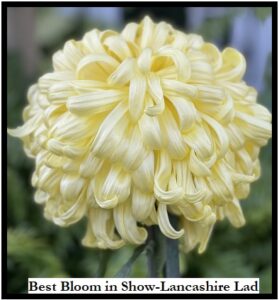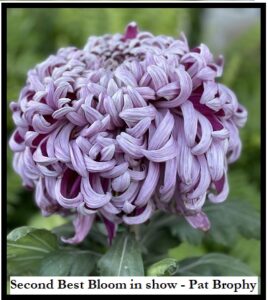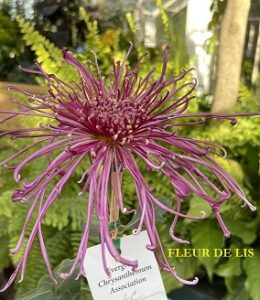EVERGREEN CHRYSANTHEMUM ASSOCIATION
Seattle, Washington
Email us at: steve at ecamumclub dot org
Furney’s Nursery >>——-> Partners with ECA in Chrysanthemum in Propagation and Exhibition
MARCH ECA NEWSLETTER
MEETING OF THE ECA –THURSDAY, March 14th, 2013, at 7 PM at the Seattle Police Athletic Association Office (SPAA) site at 11030 East Marginal Way South, Tukwila.
TELEPHONE COMMITTEE MEMBERS contact your lists early, as your calls do help to increase attendance. Also mention our Club plant sale at the March and April meetings.
DUES – Members are encouraged to pay 2012 dues to Treasurer, Mark Ross. Annual dues are $15/member or $20/couple. Dues must be paid before or at the March meeting for members to be listed in the clubs 2013 yearbook
PLANT SALES – The member plant sale will be at the March meeting, March 14th. We may have a second member plant sale at our April 11th meeting.
Our public plant sale will be April 13 (Saturday) from 9-1:00 at Furney’s Nursery in Des Moines (21215 Pacific Hwy South). At least 8 people are needed for Set-Up on Friday April 12th and will discuss staffing the sales at our March 14th and April 11th meetings.
PLANT CULTURE and SUPPLIES – Members are reminded to bring in their extra plants for our member plant sale and the public sale. Only healthy looking plants are accepted for the “Sales Events”. For those bringing in plants, please also bring in newspaper or a cloth to cover the table if your plants are in an open bottom carrier. This will help the clean up crew when tidying at the end of the meeting.
Cultural recommendations are attached for March and will be discussed at the March meeting.
CONTACT FOR SUPPLIES
Gary Budzeak, Don Stark and John Harden are responsible for the club supply orders. Please contact one of them for soilless and supply needs at the March meeting.
PLANT SELECTION IS A VERY IMPORTANT ASPECT OF THIS GAME.
You older hands, if you have grown the same cultivar from your own stock with poor results, throw your stock away and buy a plant or two of that cultivar at the plant sale. Select carefully, you want a healthy cutting, and if the grower didn’t think enough of it to put his initials on the tag, go get a different one. Keep looking for the best stock available.
New Members are encouraged to contact Bob Ewing to be assigned a coach who will provide personalized growing instruction and advice. It is highly recommended that new members take advantage of this membership service. Don’t be shy give Bob a call!!!
NEW MEMBERS – Welcome to the new members who joined ECA late in 2012 and early this year 2013. New members receive ten free plants the first growing season. (Couples receive 15 free plants). Introduce your self to our new members Gary Budzeak, Madeline Smith, and Sekiko Yates at our next meetings.
If you are receiving this notice by mail and have email, please send an email to me with your email address and you will receive the monthly newsletter by email in the future..
MARCH TO DO LIST (edited from DRS 2-21-05)
1. Clean pots and gather materials for potting:
· For soilless growers, supplies include soilless mix, Peters 9-45-15 fertilizer, and optionally, ¼ inch screened pumice, perlite or grit. Most of our growers use the M & R Soilless potting mix sold by the club. Addition of the pumice perlite or grit is not necessary for this stage. Generally the pumice etc. is added for the 9-inch potting. Some also add the pumice to the mixture for the 6-inch potting.
· For McGlashen soil mixes, you will need good garden loam; pumice, perlite or grit; and leaf mold or course greenhouse peat, plus well composted manure, steamed bone meal, slacked or hydrated lime and a good dry rose fertilizer such as 4-10-8. See your copy of the McGlashen book for details.
2. Pot mums into 4 or 6-inch pot:
· Clay pots are recommended when possible for the 4 or 6 inch potting as these pots breathe and dry out faster during cool March and April days.
· Wash used pots in a bleach/water solution, i.e. 2 teaspoons per gallon of water. Then rinse in fresh water. Let the cleaned pots set in the clear water for 3 or 4 minutes to clear out the bleach. Change the rinse water occasionally to clear out the bleach from previous rinses.
· Pot on when the ring of roots around the bottom of the pot is substantial. Do not compact the mix and leave room at the top for watering.
3. Move pots outdoors:
· After mums have become well established in the new pots (1-2 weeks) move mums outdoors or to cold frame to slow the foliage growth and toughen up the plants. The desirable ambient temperature is 50 to 60 degrees.
· To keep roots warm and at a stable temp, bury the pots in the soil or in a layer of compost or manure. Six inches is a good depth for the compost or manure. A cold frame is the best solution for this stage!
· Lacking a good sunny location, B-9 is a growth retardant spray mix that tends to help plants from getting too leggy. It is available through the club.
4. Stopping Dates:
· Review stopping dates and stop mums as their stopping dates arrive. Very few varieties require pinching in March unless a double pinching regimen is being followed (Phil Houghton March 15 and May 15 for example).
· Refer to the various ECA lists of stopping dates. Copies of a stopping date list will be available at the meeting.
5. Keep growing vigorously:
· Water as needed, but keep relatively dry
· Spray or control aphids
· Fertilize soil less plants with 9-45-15 or Miracle Grow solution starting the 2nd or 3rd week after potting. Use fertilizer at ½ strength that is approximately ½ teaspoon/gallon.
Begin culling process in March to get to the final growing group. Send surplus
quality plants to plant sales or share with other ECA members. Throw away poor
plants and damaged or diseased plants.




